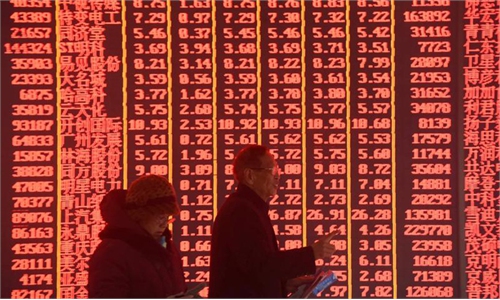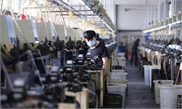COMMENTS / COLUMNISTS
Containing coronavirus puts China’s economic expansion in the fast lane

Illustration: Tang Tengfei/GT
China's economic engine is now completely rebooted and the government's earnest efforts to contain the novel coronavirus outbreak have paid off. Chinese economists are mostly optimistic, predicting that annual economic growth will reach 3 percent - a feat likely to be envied by the world's other major economies.The positive sentiment seen in the Chinese people is building with every passing day, a result of the country's determination and competitive edge in staving off the once-in-a century COVID-19 health crisis.
Last week, 10.7 million students nationwide sat the annual college entrance examinations. The test, though postponed for a month, is a loud reminder that China has conquered the disease and that life here has largely returned to normal.
Across the country's 500-odd cities office buildings are lighting up, factories are humming, streets are packed with vehicles, courier deliveries are piling up on the doorsteps of communities, and restaurants, night clubs and shopping malls are filling up.
Although the theaters, cinemas and indoor swimming pools remain closed as a precaution, tens of millions of Chinese are flying or taking high-speed trains for both business and leisure travel.
Statistics for May and June show the country's retail sales are again accelerating. Supported by an increasing employment rate and rising salaries, middle-class Chinese urbanites are again snapping up luxury German cars, French bags, Korean cosmetics and Southeast Asian fruits.
And China's stock market is "spitting fire" with the benchmark Shanghai and Shenzhen indexes both elevating more than 13 percent in the past 10 trading sessions.
Domestic investors are queuing up at the brokerage houses to open trading accounts and overseas capital can be seen flocking to the A-shares. With the demand for China's yuan steadily on the rise, the currency has significantly gained in value against other global currencies.
It was the publication of the private Caixin/Markit purchasing managers' index in early July that helped ignite investors' penchant enthusiasm to purchase stocks. The PMI rose from a trough in February, when the coronavirus lockdown was at its most severe, to a peak of 58.4 in June, its highest reading since spring 2010.
A flourishing equity market is almost certain to boost China's domestic consumer spending and support a broader economic boom, as individuals with growing fortunes and bulging pockets tend to shop more at the supermarkets and online stores, leading to a healthy cycle of economic expansion. At the same time, a thriving stock market will persistently attract overseas, hard-currency investment, which also benefits the country's growth.
China's peculiar centralized governing system - some define it as "patriarchal administration" - has once again displayed its unique prowess in containing mammoth challenges like the coronavirus, after helping this country weather the two financial crises of 1990 and 2008, the latter of which started from a horrendous debt debacle on Wall Street which later enveloped the whole world.
When the unknown virus assaulted China in January, China's policymakers made the mind-boggling decision to put its 1.4 billion people on lockdown for the Chinese Lunar New Year holiday. This drastic action set the foundations in preventing the spread of the virus across the country, with stringent contact-tracking and quarantine efforts subsequently contributing to a clean success.
Without a doubt, the draconian national lockdown hurt China's economy deeply, as financial activity suddenly dried up. The economy shrank 6.8 percent in the first quarter, the first contraction in the country on record.
But the policymakers quickly moved to the economy's rescue. The central bank injected 1.7 trillion yuan to refinance the banks and calm an uneasy market. Many small and medium-sized businesses were given preferential loans and tax and fee exemptions, and the government's supportive policies have helped them to survive and recover today.
When China was knee-deep in the fight against the COVID-19 attack, the world heard US Secretary of Commerce Wilbur Ross, tone-deaf to the Chinese people's suffering, say the epidemic in China would "accelerate the return of jobs to North America".
But it turns out that this country has, once again, managed to defy the doubters like Ross.
Now, Chinese leadership is focusing on developing the technologies of the future, from sweeping 5G-led digitalization, to industrial robots, clean renewable energies, electric cars and artificial intelligence. If expectations are correct, the country's gross domestic product (GDP) is likely to return to its routine annual growth of 6 percent, which is expected to surpass that of the US around 2025 in nominal terms.
The author is an editor with the Global Times. bizopinion@globaltimes.com.cn


